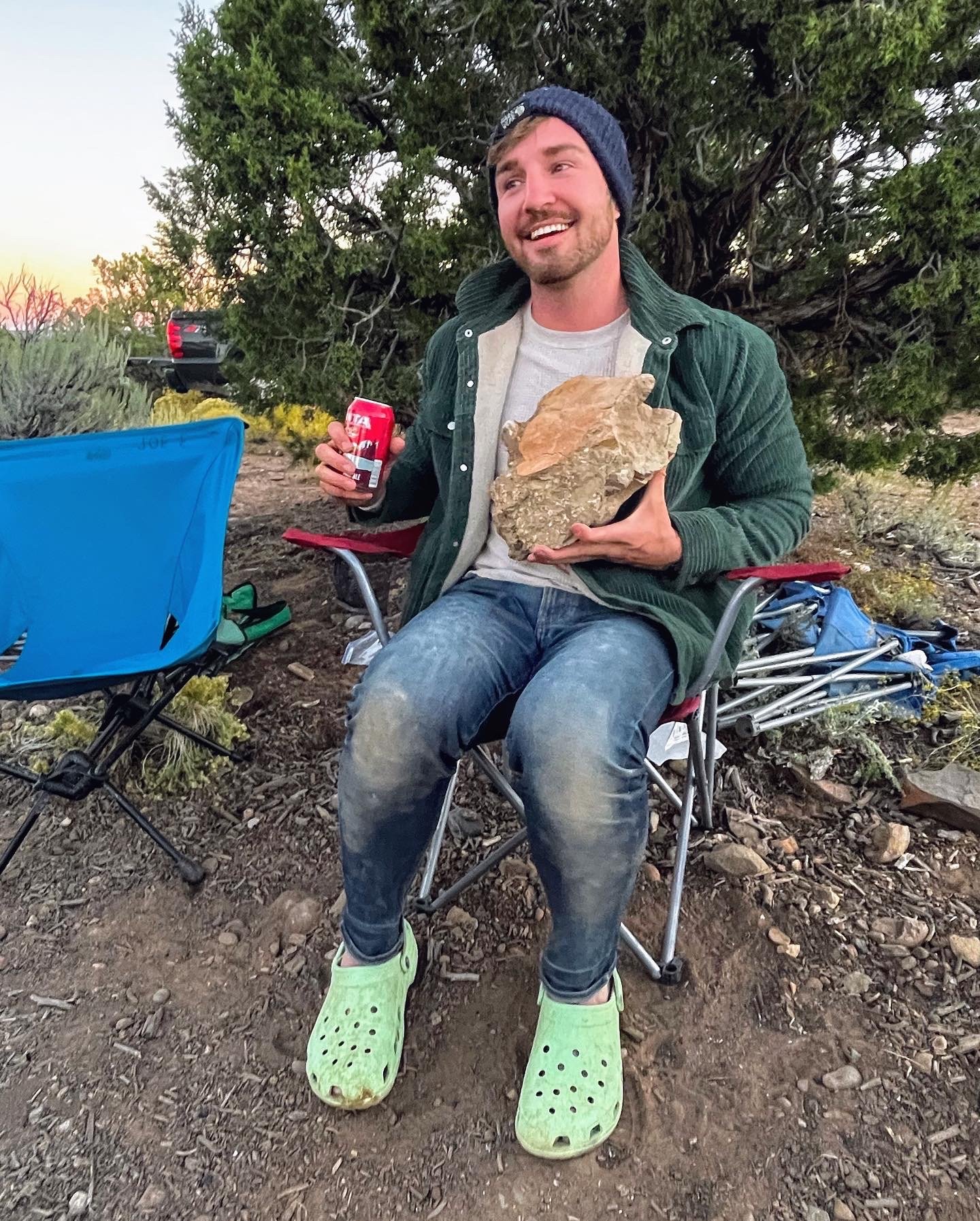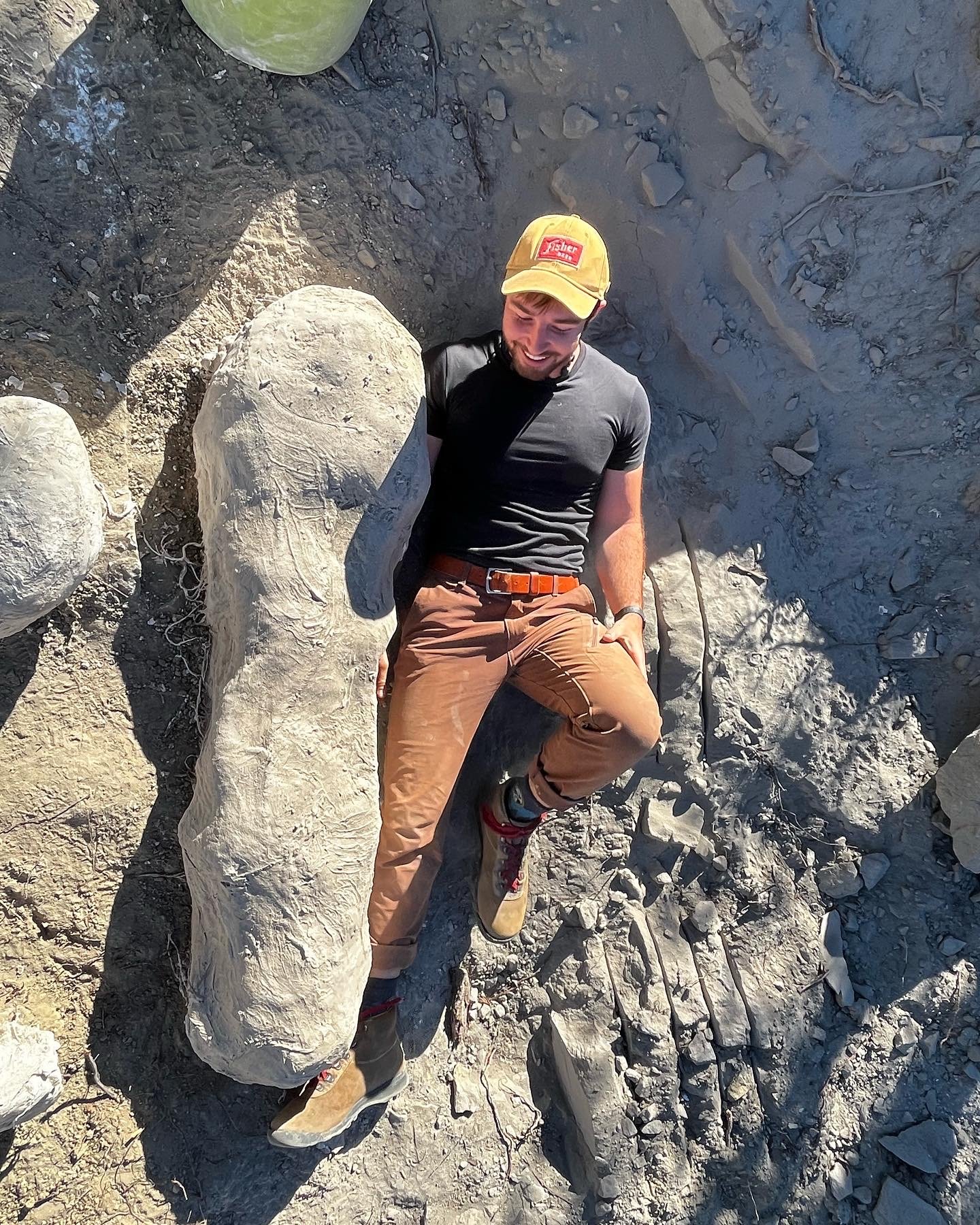🦕 Paleontology
Holding a mold of an ankylosaurus holotype
Museums have a duty to foster outreach initiatives for the public to not only educate visitors about scientific and cultural goals, but to directly involve them through hands-on collection tours, events, and volunteering opportunities. In my experience, no museum has done this better than Salt Lake City’s premier science museum, the Natural History Museum of Utah.
Every Janurary, NHMU hosts dinofest, a dinosaur-themed festival to celebrate ancient life and the fascinating practice of paleontology. During dinofest, visitors get to interact with specimens, meet paleontologists, and can even try their hand at preparing an actual specimen in the lab. There’s no better way to demystify scientific practices than to invite the public to engage directly with it.
While losing my mind at the depth and splendor of NHMU’s paleo collection, a volunteer coordinator struck up a conversation with me and informed me that most of the collection was found and prepared entirely by volunteers.
That night, I immediately submitted to be a volunteer with the museums.
Triassic prospecting
Prospecting for fossils during the Triassic period (250mya). The museum has special interest in studying the Triassic period, a fascinating period for life and the genesis of classification for many animal groups.
During this time we discovered primarily Phytosaur remnants. Although Phytosaurs look like modern crocodiles (despite often growing the menacing lengths of over 30 feet), they are actually great early examples of convergent evolution to a modern species, sharing no relation. Most notably, a phytosaur’s nostrils are located near the eyes, rather then at the end of the animal’s snout.
Prospecting revealed many great specimens, including several jaws, snouts (complete with baby teeth), and much more intimidating fully grown teeth.
Cretaceous Prospecting
Prospecting for cretaceous fossils is a fascinating experience because of the immense size and vibrant diversity of life during the time before the K–Pg extinction event. Utah is one of the greatest places in the world for discovering premier cretaceous fossils due to excellent conditions for preservation and discovery.
Hauling a Ceratopsian Holotype
The paleontologists asked for spry volunteers willing to haul out a heavy plaster jacket of a potential ceratopsian holotype—a species entirely new to science. I jumped on the opportunity to test my mettle (and my back-strength).
Hauling a 230lb ceratopsian skull fragment nearly 2 miles out of the quarry.
The things I do for science.
Hadrosaur Quarry
A site was found earlier in the season of a partially articulated (connected) hadrosaur (duckbilled dinosaur), a relatively common species that roamed cretaceous Utah. Over the course of several days, our team excavated, prepared, and collected the bones.
Plaster casting timelapse






















